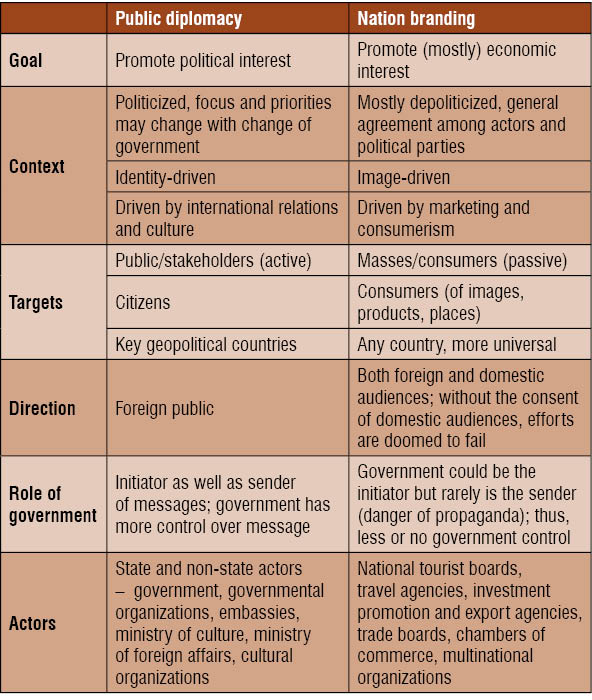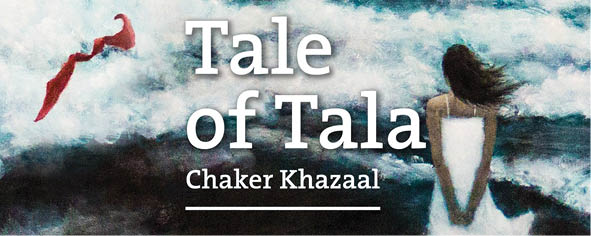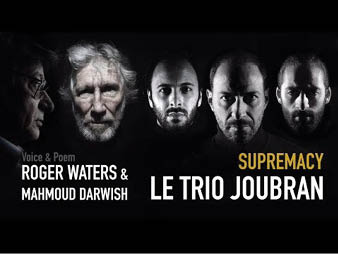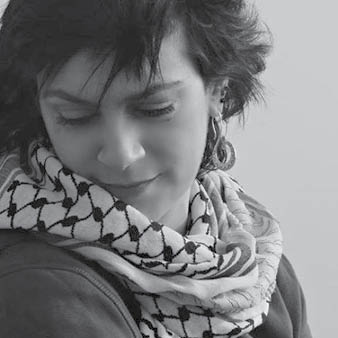The history of diplomacy can be traced back to the beginning of interactions between human beings. We have no record of what diplomacy might have looked like in prehistoric times, but there is no doubt that humans have always engaged in activities that involve sending messages back and forth. In 1796, Edmund Burke was the first to label diplomacy the activity that until that time had been known as negotiations.
It is generally agreed that the term public diplomacy (PD) was first used in 1965 by Edmund Gullion, an American academic who described it as trying to “influence the attitudes and opinions of other peoples and governments in such a way as to exercise influence on their foreign policy decisions.” Public diplomacy therefore engages in a contest of credibility to achieve an objective, it is strategic communication in the context of international relations.
Joseph Nye, the Harvard scholar who in 1990 defined the term “co-optive soft power,” describes PD as efforts to influence another society’s public opinion in order to influence its government. A three-word explanation of the purpose of these linked disciplines of PD, strategic communication, and soft power could be: whose story wins.*1
PD in the twentieth century was viewed as a state-based instrument used by foreign ministries and other government agencies to engage and persuade foreign publics for the purpose of influencing their governments. Today, PD is conducted through various instruments used by states, associations of states, and some sub-state and non-state actors to understand cultures, attitudes, and behavior; to build and manage relationships; and to influence thoughts and mobilize actions to advance their interests and values that automatically influence their foreign policy–making.
Very often, governments have a set of objectives and a particular view about an issue and must move their collaborators’ minds to allow them to participate in the way they wish. We should be completely clear about this: diplomacy is about interests, and we’re about promoting our interests in the world. PD is about helping to persuade, engage, influence, and inform as to permit the process to happen. Twenty-first-century PD is referred to as New Public Diplomacy (NPD).
A related concept in this context is nation branding, in which the unique features of a country or nation are stressed to set it apart and make it attractive to others. The following table was introduced by Gyorgy Szondi*2 to differentiate between nation branding and public diplomacy.

We agree with Szondi that nation branding and public diplomacy are not isolated concepts but rather interlinked and mutually exclusive strategies of the broader concept of national image management. Therefore, the conceptual aspects of nation branding and its conceptual linkages with public diplomacy are very close and go in parallel.
PD and propositions for Palestine
There are many examples of PD that governmental bodies can employ to better brand the nation. The story of Palestine can be echoed through the voice of a poet, artist, architect, writer, or any individual. Such communication can be much more convincing than the official story delivered by diplomats.
The Palestinian-Canadian writer Chaker Khazaal engagingly relates the story of Palestinian refugees in his novel Tale of Tala. During our interview, Khazaal stressed that Palestinian refugees are entirely forgotten and live in dire conditions. He hopes that his story will refocus attention towards those refugees. When asked what we need to better brand Palestine, Chaker answered that we need a nice story, younger people, diplomacy, and technology to represent the Palestinian cause.*3 Chaker’s work is an example of PD.
It is important to try to answer the question: What should Palestinian PD promote? Nations try to shed light on one or more of the elements that shape their identity, history, religion, national movements, regional belonging, culture, grassroots, individuals, human capital and leadership, cuisine, fashion and embroidery, industry, agriculture, manufacturing, and products.
Arab states have played a major role in shaping Palestinian identity through the different strategies that each country has adopted towards the Palestinians. The Arab regional role in shaping Palestinian identity has led to introducing the Palestinians as refugees, victims, guerrilla fighters, stone throwers, and poor beggars to the international world. Whether we like it or not, the image of a Palestinian abroad is that of stateless, ID-less, jobless people.

If we look at the six elements suggested by Simon Anholt to shape a national identity – people, culture, investments, policy, brands and tourism – we will easily discover that identity for Palestinians is not only about the nation’s image but also about the political image of its leader and the human capital of its heroes. Leaders or personalities are human capital for Palestine and include poets, artists, and the figures who have managed to penetrate the international borders with the soft skills they have been gifted. In order to counter the image of a victim, why not introduce the heroes?
Palestinians are perceived poorly and with sympathy, and in Palestine’s nation branding, there exist a number of already established brands. The rap group DAM, young Palestinian brothers who focus on conflict and poverty; Trio Joubran, three musician brothers who have taken the oud’s music to world-class level; Reem Bana, a singer, another icon in Palestinian music who travelled the world and managed to gather the love of millions around the globe. Athletes such as the Twin Skaters and the Speed Sisters, the first all-women race-car-driving team not only in the Arab world but also in the Middle East. Among poets, it is not contested that Mahmoud Darwish, Ghassan Kanafani, and others already brought Palestine to the world in various languages. Palestine is rich as well in cartoons, a new kind of art, with names such as Naji al-Ali, Mohamed Sabaaneh, and many others whose cartoons and posters gained the attention and inspiration of the world. Artists such as Nabil Anani, Bashar Alhroub, Tayseer Barakat, Laila Shawa, and many more are shown in famous world galleries. Scholars such as Edward Said, child heroes such as Ahed Tamimi or Shadi, Ahmad, and the photographer Arine Rinawi, a young woman who managed to reshape the field of photography in Palestine, and many others. These are humble examples of personalities that make Palestine unique, and they are established brands that Palestine can utilize in its nation branding to practice public diplomacy by introducing those talents and skills that Palestine can put on the international scene and that have no duplicates anywhere else. Palestinian human capital is a major investment in building a national brand for Palestine. Palestinian official diplomacy carried out by the ministry of foreign affairs via numerous embassies sheds light on these personalities, enabling them to take part in exhibitions, concerts, and other events that take place in international cities and fora.
We need to address two questions: How do others view us? What do we want to promote about Palestine?
Tourism is another aspect. Registered old cities or cities listed in the UNESCO world heritage record can be a good focus. The Palestinian cities of Jerusalem, Hebron, Jericho, Battir, and Bethelehem have great significance for tourism, culture, history, and religion. Palestine should consider branding itself by focusing on these cities and what makes them unique, a much-needed effort to attract attention and to show the Palestine that we wish to promote.
In the past, public diplomacy was conducted through messengers, ambassadors, and official TV and radio shows. In the twenty-first century, however, in times of technology and communication, power is not only about who wins wars but rather about whose story wins! And today public diplomacy has a new set of tools.
Social media plays a huge role. There exist today a number of pages that carry out PD. For example, the Palestine Institute for Public Diplomacy (PIPD), affiliated with the PLO, has been working on amplifying the positive image of Palestine. Other online sources are Positive Palestine*4 and the YouTube channel Dialogue by Diana Al Shaer.*5 These are social media outlets and podcasts that use all platforms, including videos and images, to promote the positive aspects of Palestine. Craving Palestine is another example that promotes the best recipes of Palestinian chefs and dishes made of Palestinian ingredients and herbs. Academic conferences, festivals, parades, TV shows, seminars, and webinars are all new tools to employ in new PD.
Palestinian culture contains many treasures: the hand-embroidered thobe (traditional dress), the dabka dance, the delicious local cuisine, and the amazing spirit of hospitality are among the many things that make Palestinian culture very attractive.
The Palestine International Cooperation Agency (PICA) is the official example of practicing PD on behalf of Palestine. PICA is affiliated with the ministry of foreign affairs and works independently to promote Palestinian public figures, exporting Palestinian know-how and expertise to other countries. They have managed to send Palestinian expert teams in health and agriculture to different countries in Africa, Latin America, and elsewhere to provide aid to those countries and their public. Such missions definitely influence public opinion, which automatically influences their foreign policy decisions. This is how states define their relationships in the twenty-first century, based on interests and needs. The country that provides more can surely win other countries’ votes. Cultural exchange, international trade, and economic ambition are fundamental characteristics of human activity. We connect with each other to learn from each other’s technological successes, to experience each other’s cultural variety, and to build economic partnerships that can sustain our way of life.
For a nation to change its image, it needs first to change its behavior. Then, equally important, it needs to tell the world about the changes. The images of a nation won’t automatically change. The way for a nation to gain a better reputation is to communicate to the international audience how good it is. This practice is called nation branding. The government needs to focus on the treasures of talent that Palestine hosts and communicate the relevant stories through their own tangible tools that will positively influence the image of Palestine.

There is no point in trying to separate hard and soft power. They are usually both in play and inextricably linked. The big difference between public diplomacy by governments and commercial branding is that “companies find it easier to be popular with their audiences simply because they are offering something those audiences actually want to buy.”*6 A nation cannot remake itself like a company launching a new product. In soft power, as in all forms of strategic communication, the narrative and the reality have to reflect each other. As public diplomacy and nation branding gain importance, there is a shift towards privatization. As experts and consultants provide this service for governments, many states have created what is referred to as the “international development agency” that works in parallel with the ministry of foreign affairs and might become an essential part of organizational structures at embassies. PICA is the Palestinian example. Both fields are evolving rapidly and can change instantly according to political, cultural, and social developments. Thus, increased cooperation is needed between practitioners and scholars.

How can we Palestinians better manage our reputation and better brand our country? Our work must be guided by the values and criteria of credibility, collective work, and clearly defined objectives, enabling us to make targeted investments and carry out studies and surveys to tackle our nation branding scientifically. This will help us shape and disseminate the Palestinian narrative in favor of the Palestinian cause and resist a stronger counter narrative.
*1 John Arquilla and David Ronfeldt, “The Emergence of Noopolitik: Toward An American Information Strategy,” RAND Corporation, MR-1033-OSD, Santa Monica, Calif, 1999, p. 53. As of March 18, 2020:
http://www.rand.org/pubs/monograph_reports/MR1033/index.html.
*2 Gyorgy Szondi, Discussion Papers in Diplomacy, “Public Diplomacy and Nation Branding: Conceptual Similarities and Difference,” Clingendael: Netherlands Institute of International Relations, 2009.
*3 Recorded interview conducted in Ramallah on Saturday, September 22, 2018, with Chaker Khazaal.
*4 For more information, please visit Positive Palestine or the Facebook page https://www.facebook.com/PositiveFilastin/.
*5 Available at https://www.youtube.com/channel/UCRtpPYRdR12UkiZknSqqCmQ
*6 Szondi.


